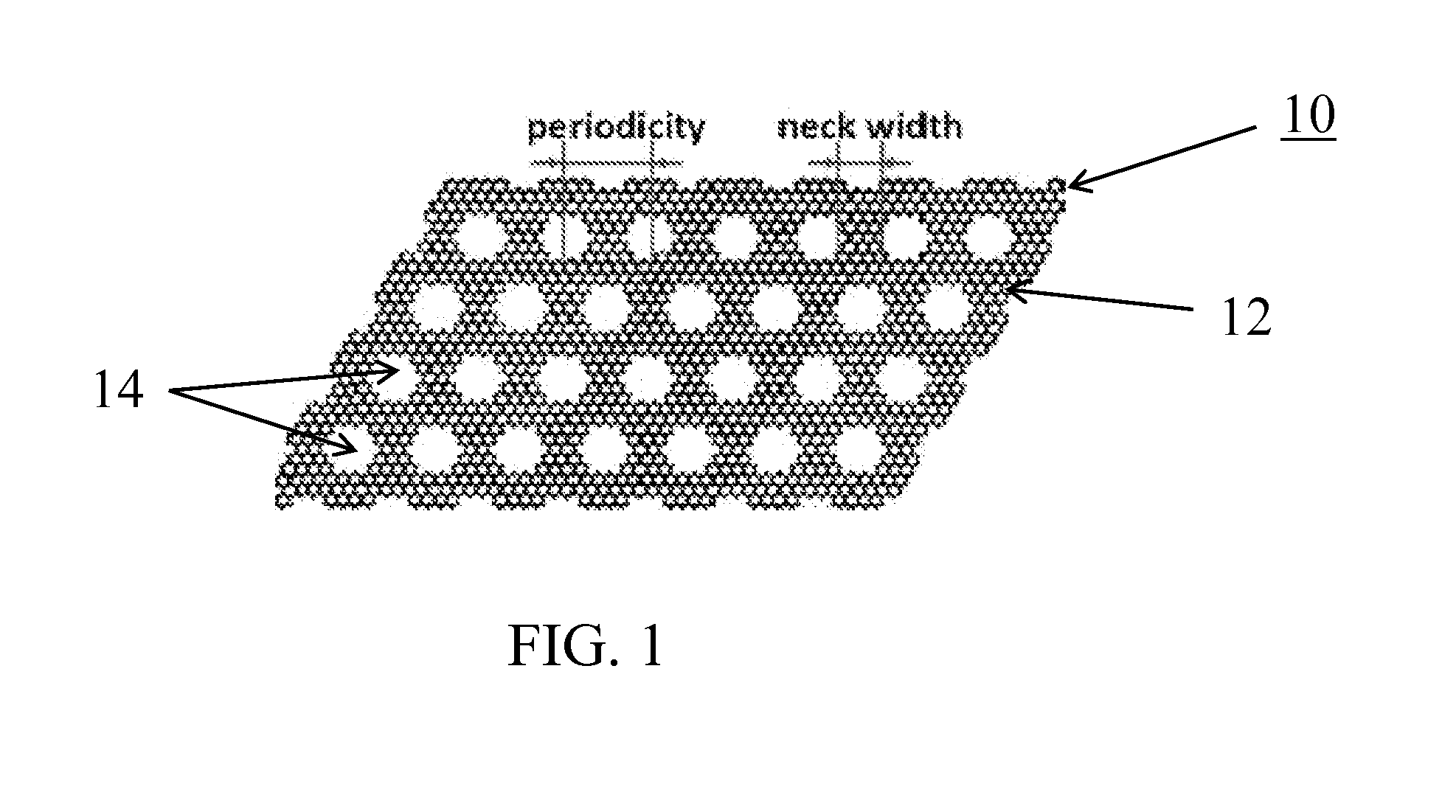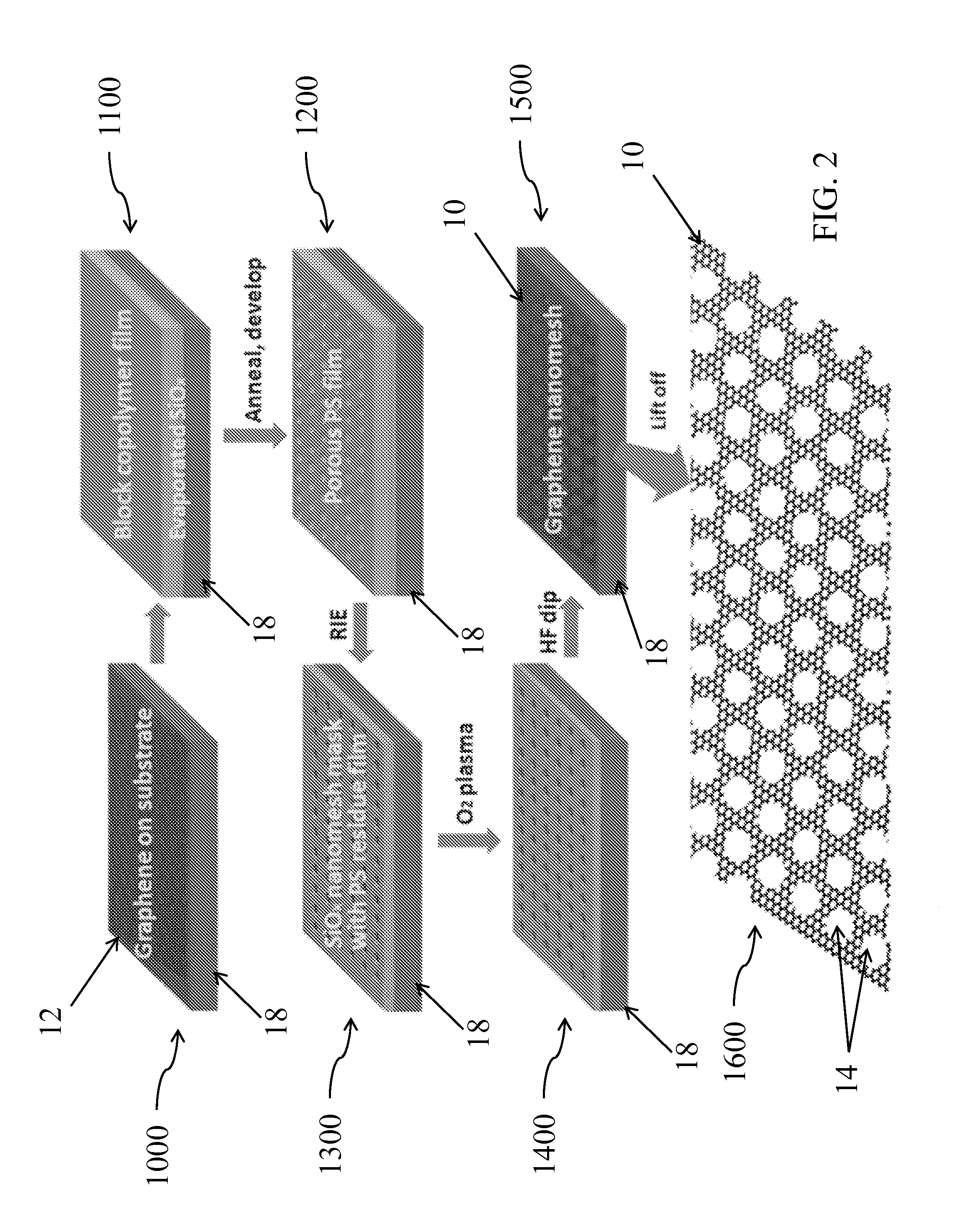Graphene nanomesh and method of making the same
a graphene nanomeh and nanomeh technology, applied in the field of graphene, can solve the problems of not being able to obtain gnrs in the sub 10 nm regime experimentally, preventing this method from being used to obtain gnrs with a sufficiently large band gap for room temperature fets, etc., to achieve uniform periodicity and uniform neck width
- Summary
- Abstract
- Description
- Claims
- Application Information
AI Technical Summary
Benefits of technology
Problems solved by technology
Method used
Image
Examples
Embodiment Construction
[0041]FIG. 1 illustrates a schematic illustration of graphene nanomesh 10. The graphene nanomesh 10 includes a sheet 12 of graphene having a plurality of apertures 14 formed therein. The sheet 12 of graphene may have a single layer of graphene or, alternatively, several layers of graphene. The plurality of apertures 14 are periodically arranged throughout the sheet 12. The graphene nanomesh 10 has two structural parameters that affect the electrical properties of the sheet 12. The first structural parameter is the “periodicity” of the apertures 14 and is defined as the center-to-center distance between two neighboring apertures 14. The second structural parameter is the “neck width” of the apertures 14 and is defined as the smallest edge-to-edge distance between two neighboring apertures 14 in the graphene nanomesh 10. Both the periodicity and the neck width are illustrated in FIG. 1.
[0042]Periodicity and neck width define the basic structural information in the graphene nanomesh 10...
PUM
 Login to View More
Login to View More Abstract
Description
Claims
Application Information
 Login to View More
Login to View More - R&D
- Intellectual Property
- Life Sciences
- Materials
- Tech Scout
- Unparalleled Data Quality
- Higher Quality Content
- 60% Fewer Hallucinations
Browse by: Latest US Patents, China's latest patents, Technical Efficacy Thesaurus, Application Domain, Technology Topic, Popular Technical Reports.
© 2025 PatSnap. All rights reserved.Legal|Privacy policy|Modern Slavery Act Transparency Statement|Sitemap|About US| Contact US: help@patsnap.com



